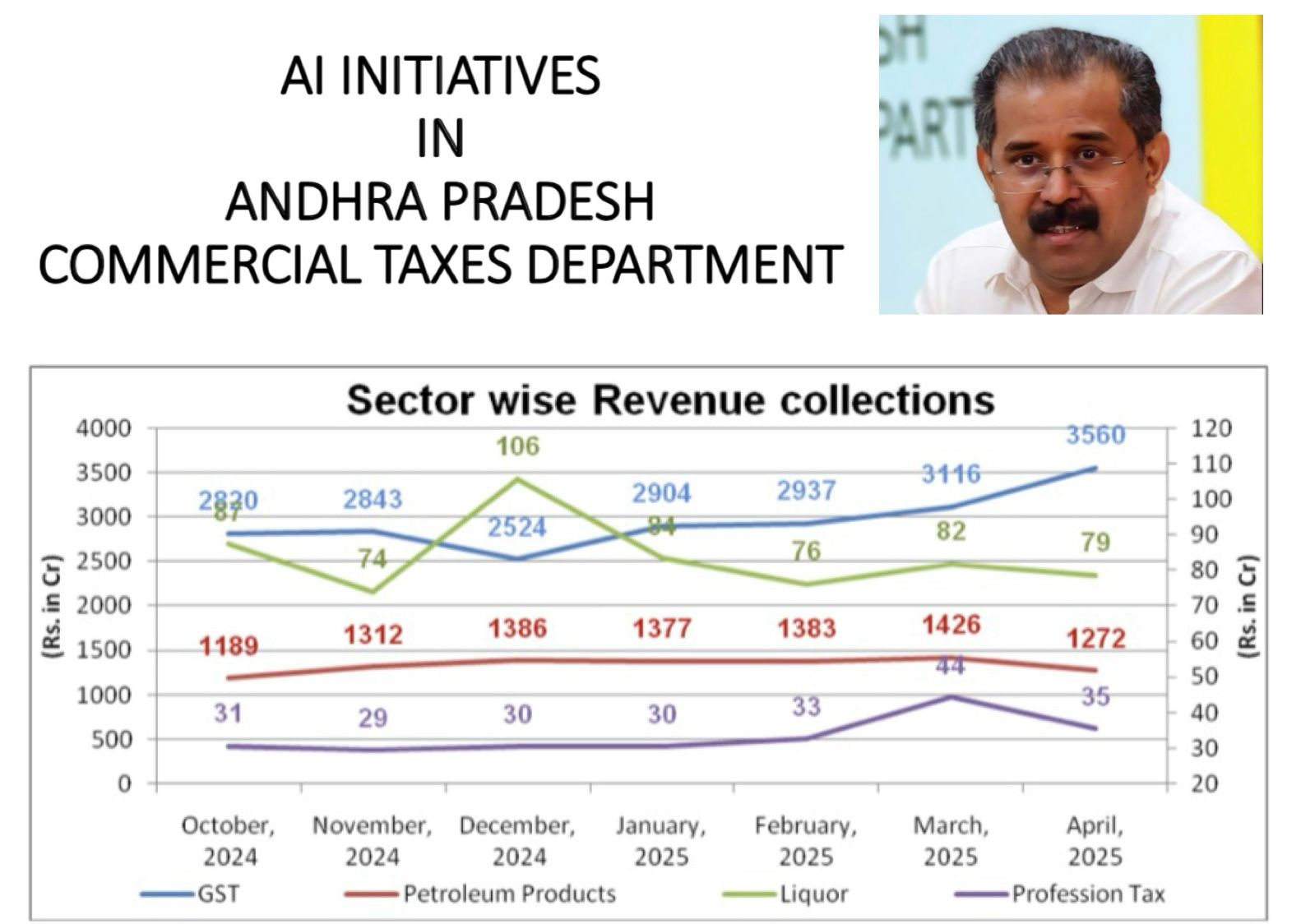By Desaraju Surya
AMARAVATI: Andhra Pradesh has emerged as a pioneering state in the country to effectively use emerging technologies to enhance tax revenues by widening the taxpayer base on one hand and plugging the loopholes on the other.
The steady rise in Goods and Services Tax income since December 2024 to reach a record peak of Rs 3,560 crore in April 2025 in net collection is a clear outcome of some Artificial Intelligence-driven initiatives being implemented by the AP Commercial Taxes Department, under the leadership of Chief Commissioner of State Taxes Babu A.
Babu, the senior IAS officer belonging to the 2003 batch, is known for his dedicated efforts in making effective use of Information Technology for better outcomes in service delivery. Babu was the one who spearheaded many IT initiatives of the Andhra Pradesh government, most notably the Real-Time Governance system that became a new paradigm of citizen-centric public administration.
AP has now emerged as the first state to use data analytics and AI tools in a meticulous manner to improve the GST net and propel revenue growth on a sustainable path.
The GST-payer base in AP that was 4,13,852 on October 29, 2024, has now reached 4,31,524 with the addition of 17,672 new assessees in six months.
The net GST revenue in AP rose from Rs 2,524 crore in December 2024 to Rs 2,904 crore in January 2025, Rs 2,937 crore in February and Rs 3,116 crore in March.
The gross revenue jumped from Rs 4,046 crore in December 2024 to Rs 4,946 crore in April 2025.
The steady increase in net GST collection also reflected the growth in consumption base, portending a rebounding economy of the state.
When the new regime in the state set its focus on improving the government revenues, many challenges confronted it, particularly in the GST domain.
There was a large volume of data of taxpayers like the books of accounts, GST returns, e-waybills and also third-party data.
Manual handling of this data did not help things as there was no real-time fraud detection, scrutiny, audit or inspections. This not only hampered decision-making but also impacted revenue generation. Work efficacy of the department officers and staff was also negatively impacted.
Babu did not waste time after he assumed charge as the CCST in mid-October last and deployed emerging technologies to better use and bring about a turnaround.
Accordingly, Artificial Intelligence and Machine Learning were deployed in the first step for detecting anomalies and clustering patterns in taxpayer data.
This enabled faster and accurate enforcement actions with improved fraud detection and sector analysis.
AI tools were leveraged for scrutiny, audit and investigation processes in the Commercial Taxes Department.
AI-based systems were also used for handling informers, (taxpayer) grievances and complaints, which contributed to enhanced transparency and reduced verification time.
“We are adopting a reliable and secure AI framework that will ensure data integrity, operational accuracy, transparency and regulatory compliance while eliminating delays. This will also lead to swift and fair resolution of citizen grievances and complaints, if any,” according to Babu.
Simultaneously, the department is also spreading its dragnet to entrap GST evaders besides collecting (piled up) arrears from defaulters.
An AI-based solution is also being worked out to let people report about clandestine businesses, which would eventually be brought into the GST net.
The department is also lining up various other initiatives to further strengthen the system through workflows, which are now in the proof-of-concept stage.
An AI-powered chatbot will also be in place soon to impart necessary training to tax officials as well as the taxpayers in multiple languages to expand the reach.

